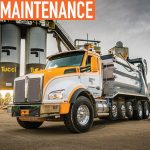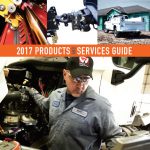It’s sometimes hard to connect with workers across the generation gap. If we consider Millennials working for Gen Xers, there can be such barriers as language, differing work ethics, and differing expectations, which is not to say these differences in themselves are a bad thing—just different. If even two workers out of 10 are Millennials, the whole crew can be thrown off. This applies to driver pools, customer service techs, shop techs, and more. Love it or hate it, Millennials are a large part of the workforce and, if given the proper environment, can bring a lot to the table.
Amy Hirsh Robinson, MBA, is a leading expert on the changing workforce and the impact of generational shifts on organizations. She consults to Fortune 500 companies, privately held businesses, and not-for-profits to prepare and retool leaders and their workforces to excel and compete in the New Economy. Her strategies and programs focus on onboarding new employees to ensure the retention and engagement of top talent, managing and motivating a multigenerational workforce, and building competitive talent pipelines through effective succession planning practices. Robinson speaks and publishes widely on workforce strategies for the New Economy and has been cited and quoted in publications such as Forbes, the Los Angeles Times, and the Huffington Post. In this month’s Shop Talk, Robinson turns her focus to fleet-driven industries.
RECRUITING & ONBOARDING
As the skilled-trades workforce ages, leaving increased job availability, it’s important for small and medium businesses to be able to appeal to Millennials. “The competition for skilled Millennial talent is heating up,” Robinson says. “Small and medium business will have to combat the negative images and stereotypes that younger generations have of these trade jobs as low paying and lacking in career growth and opportunity. They will have to get clear on the value they—as employers—provide to prospective workers and be able to communicate that value effectively.
Millennials get a bad rap in the workforce—and when it comes to life skills in general. This is a perception that needs to be kicked in order to fully integrate multi-generational work forces.
“Millennials value career development and flexibility,” Robinson explains. “Fleet managers must invest in defining and providing clear career paths and development opportunities for Millennials or risk high attrition. Additionally, fleet managers will need to get creative about providing flexible work arrangements. That means remote work options and scheduling, flexible start/ends times to the day, and leaders who walk the talk and role model flexibility themselves.”
CLOSING THE GAP
It’s important for management in fleet-driven companies to engage Millennials. But, is it better to engage more on their level as opposed to expecting Millennials to acclimate to current industry expectations? “Millennials will soon make up 50% of the US workforce. They are setting the tone for employee engagement and the changing employer contract for the foreseeable future,” Robinson says. “The pure size and influence of this generational cohort has affected the perceptions and attitudes of Generation X and Baby Boomer employees, as well. To stay in business and grow, companies will need to change the way they engage all employees or face extinction.”
There are a few things managers should keep in mind going forward. “Get curious about this new generation,” advises Robinson. “They are ambitious, smart, and want to innovate the industry. To stay competitive in this new economy, you must continue to evolve your business and the way you get your work done. Be open to engaging Millennials toward this shared goal.
WANT MORE FROM AMY HIRSH ROBINSON?
www.interchange-group.com
_______________________________________________________________________
MODERN WORKTRUCK SOLUTIONS: April 2017 ISSUE
Did you enjoy this article?
Subscribe to the FREE Digital Edition of Modern WorkTruck Solutions magazine.
![]()




